We met Elvis in a mini-mart in Winkelman, Arizona last May. This one chance encounter changed the way we think about photographing people and opened our eyes to parts of the mining landscape we’ve been exploring as part of our Copper Belt Project that we hadn’t much considered before even though they were all around us. In this one afternoon, Elvis, bars and booze all came together to make us see things differently.
The smelting tower of the mammoth ASARCO Ray Mine rises behind Winkelman, a small town at the intersections of state highways 177 and 77. The mine itself is the epicenter of this loop which includes the towns of Winkelman, Hayden, Superior, Miami and other places in between. The mini-mart’s central location makes it a regular destination for residents of the surrounding mining communities and visitors like us. We often stop there during the trips we take for our Copper Belt Project. The place is always bustling. Locals stop in for beer and lottery tickets. Cops stop in for Big Gulps. Kids buy candy and soda. People traveling to and from Globe, the biggest town in the area, stop for anything from cigarettes to six packs.
When we stepped out of the mini-mart this past day, the sun was blinding. But once our eyes had adjusted, we saw a man with a fabulous mane of hair, mirrored sunglasses and a denim jacket sitting majestically on his motorcycle. Out in the Copper Belt, life is hard. Fabulous is hard to come by. This man with his long thick sideburns and jet black pompadour was something to behold. Kim took one look at him and said, “I LOVE your hair!” The man’s face cracked into a big smile.
This is how we met Jerry. Jerry is an Elvis impersonator and has played the singer for years. He says it’s a much better job than working in the mines. We thought that it had to beat most jobs, including our own. There’s a lot of freedom in being Elvis. We asked Jerry if we could take his photograph for our Copper Belt Project. Jerry happily comlied. As Elvis, Jerry has already had more than his allotted fifteen minutes of fame, but like most people, he was happy to grab a a little more.
We took photos of Jerry as we all stood in the the parking lot and talked. Jerry had stopped at the mini-mart for a beer on his drive up to Globe. He told us that he was performing that night at a bar in Claypool – the Shamrock. As Jerry talked to us, he knew we were taking his photos, but by engaging in conversation as we shot, the photos maintained the spontaneity of the moment and Jerry’s integrity as an individual. With Jerry and other people we’ve photographed on our trips through the mining towns we explore, we want our photos to resist aestheticzing and objectifying the person. Even if the person is Elvis, the ultimate figure of objectification. The photos should capture individuals in a singular moment, a result that is achieved by actually taking the time to talk to them.
Jerry pulled his driver’s license from his wallet. Elvis Presley’s mug stared out at us. Sure, anyone can pick up one of these licenses in Vegas or Memphis, but when Jerry was holding it, it was his license, part of his identity.
Kim chuckled. Jerry winked at Mark with a smile that said, “Your girlfriend is a little crazy, isn’t she?” But in his wink, he was also acknowledging that we’re all a little crazy and so is the whole damned world.
Jerry looked at Kim and asked “Do you want to hear a song?” He obviously liked the attention he was getting. Kim asked him to sing “I Can’t Help Falling In Love With You.” “I don’t remember that one right now, how about this?” Jerry sat on his motorcycle and sang the first few lines of “Love Me Tender” in a pitch perfect Elvis voice. For that couple of minutes while Elvis sang softly from the seat of his chopped up Honda, we embraced the crazy in all of us.
Kim pointed to the brown bag with a can of beer stuffed inside Jerry’s jacket and said, “Hey, watch out for the cops with that.” Jerry pulled out a 32 ounce can can of Bud Light and said, “I keep it next to my chest to keep me cool.” Kim asked, “Won’t it get warm by the time you get to Globe?” Jerry said, “It won’t be making it to Globe.” All three of us laughed at this.
Jerry started up his motorcycle, smiled at the two of us and said, “You ought to stop by the Shamrock tonight.” We told him we would try to make it.
On our drive into Globe we passed the Shamrock. It was a dark rundown cinder block bar sitting on the side of U.S. 60. From the outside of the building, you’d never know that Elvis would be performing there that night. Kim said, “It would be great to see Jerry.” We looked at each other and knew that we weren’t going into a bar. We’re both former drunks who are now sober. Sitting in a bar in the mining belt wasn’t something we really wanted to do, even if Elvis was singing.
Entering a local bar and not drinking can seem like an invasion of privacy. In the tough mining towns of the Copper Belt, the point of going to a bar is to drink and escape the hardcore reality of daily life. With a few shots and a couple of beers, the patrons can buy a temporary reprieve, allowing them a momentary illusion of a fantasy-self that is removed from all their troubles and disappointments. When Jerry stands up and sings, he really becomes Elvis. When the locals punch the clock, leave the mine, and hit the bar for few drinks, they can become who they want to be on the terms that they enjoy. Alcohol can blur the distinction between who they are and who they would rather be.
Entering a bar and not drinking with the sole purpose of photographing the people inside them — observing them as outsiders — would be a personal intrusion, an act of exploitive voyeurism. Our position would be that of “tourists.” Patrons enter bars to experience an alternate reality removed from their working and home lives. As intruders, we would disrupt that space. Sure, we shoot photographs of people when we are out in mining towns, but we don’t actively seek people to photograph. We meet them through the regular course of events on our trips. Because of our own personal history, our regular course of events never includes stopping into a bar for a drink.
We’ve met and photographed people in local restaurants and motels across the region where we have become regulars. Our faces have become as familiar to the people we have photographed as theirs have to us. Other people, like Elvis, we have met spontaneously in the moment. If we were to enter a bar, there would be no pretense of spontaneity. Both of us firmly adhere to a practice of only photographing people when they have given their consent and we can portray them with respect as unique individuals who are not being used as props to represent a theoretical concept. Sure, the photos we have taken of people reflect a certain economic and emotional landscape, but the landscape is the background for the individual. The individual is not the landscape.
This is not to say that we have been completely innocent of documenting bars and the people who occupy them. We have, and during those times we have compromised our position on consent to some extent. In these photos, the people are not shown as distinct individuals. Instead, they become part of the overall mise-en-scène of the photograph. They become “set details,” forms filling space. When people blend into the overall scene and are not the sole focus of the photograph, their privacy is less compromised as they cannot be easily identified. They become stand-ins for an entire social portrait.
Many of the bars we’ve seen on our travels have looked completely closed and abandoned during the day. Their doors are locked, and they seem like just another part of the local ruins. But when the whistle blows at the mine at 5 p.m., the doors to these bars suddenly open. We noticed this for the first time in Winkelman. We walked by The Nugget around 3 in the afternoon, and the place seemed boarded up and abandoned. We pulled on the door, but it was locked tight with a padlock and chains.
We both thought it would be great to get inside. We are much more comfortable with abandoned bars than inhabited ones. We stood outside and romanticized what the inside must be like, disappointed that we couldn’t get in. We walked around Winkelman and shot some photos in an abandoned house. On our walk back to the car, we noticed that the door to The Nugget was open. It was 4:30 p.m., and the place had come to life in preparation for the miners getting off work.
It was surreal how this place had transformed in an hour’s time. The bar had seemed entirely dead when we walked by it the first time, and we were sure it was abandoned. Now the door was propped open and light seeped out as if to beckon us inside. We couldn’t resist getting a glimpse of the interior. We poked our heads inside the door. A woman was wiping down the bar. She looked over at us. We waved and said, “How ya doing?” She nodded, not exactly welcoming us, but not protesting as we poked our cameras in the door and shot a couple of photos.
In the photograph with the woman looking out at us, there is little to differentiate her from the bar stools or pool table. She is not “Elvis” smiling for the camera. We exchanged glances, took our shots fast and got out. Neither of us wanted to delve deeper into this bar, especially when it evoked so many different emotions.
Even though it was bright daylight, the inside of The Nugget was a dreamscape made from light and liquor. Lighting in a bar is a crucial component to maintain the illusion of escape. Bars are dark enough to obscure reality, but light enough to create an appealing space. The colored neon of beer signs and lights from jukeboxes, pinball machines and cigarette dispensers transform the dark space into a glowing world far removed from the dirt and heavy machinery at the mine. Rows of illuminated bottles beckon to the sense. Throw a few dollars on the counter, and you can feel like you’re unlocking a world of possibilities and a taste of freedom for the price of a beer and a shot.
In Clifton, there is only one bar. On our first couple of trips to Clifton, we noticed the beat-up sign for The Cave with its peeling paint and cracked neon. The building was covered with half dead vines, the roof missing pieces, and windows boarded up and broken. We thought that it was just another one of the many abandoned businesses in Clifton. The rusty swamp cooler hung from the back of the building like a piece of ancient machinery. It looked like it hadn’t been run in years.
One night when we were walking through town sharing a cherry Icee, we heard a banging sound coming from the side of the road. We looked over and realized we were standing by the back of The Cave. There was the old swamp cooler – held together by duct tape and twine – working away. The whole building looked dark and dead, but the cooler was struggling to cool the inside of the bar with its rasping breath. Curious, we walked around the outside of the building looking for other signs of life. We saw a man open a side door. Red glowing light spilled into the night. The backs of men lined the bar as they sat nurturing their drinks. Then the door closed, and the red glow was sucked back inside. We stood in darkness staring at the door.
Kim said, “I would love to go inside there.” Mark responded, “I don’t want to.” Mark’s reluctance to go into the Cave wasn’t just about not wanting to be an exploitive “photographic tourist.” Gender codes were also involved. In a tough working class town like Clifton, there can be an unspoken social understanding that drinking itself is a man’s game, and pounding down shots can be a way to prove your masculinity. Walking into a bar like The Cave with a camera and ordering a tonic water could put a man at risk of ridicule or worse. Just before reaching The Cave, a pickup trucked filled with rowdy drunks taunted us as it drove past. Mark turned to meet their looks with a defiant “don’t mess with us!” stance. They continued on. Part of fitting into a town like Clifton is understanding social codes that establish mutual respect, even if it means acting “tough” for a moment. As non-drinkers, we knew that entering The Cave to aestheticize the place and the people inside it would break those codes. The locals would be suspicious of these two arty outsiders with cameras.
In the end, our photographic ethics and anxieties over our role of “social trespassers” prevented us from going inside The Cave. Our fears were not unfounded. Arizona is a state notorious for its lack of tolerance for diversity. In recent years, it has passed strict anti-gay (SB 1188) and anti-immigrant (SB 1070) legislation. In addition, in 2010, Arizona became an “open carry” state, allowing adults to carry a concealed weapon, including guns, without a permit and encouraging the vigilantism that runs rampant in this border state. Fully aware of Arizona’s politics and how they breed intolerance, we took one last look at The Cave and kept walking.
When we drive through the town of Superior, we eat at the local restaurant Los Hermanos which also happens to be attached to the busy local bar. The restaurant caters to the mining community and is always bustling with working class families eating food which is big, basic and cheap. Every time we’ve gone to Los Hermanos, we’ve had the same waitress, Flo.
Flo always has a big smile for us, and she’s a real kidder. When we first started the Copper Belt Project, we said we wanted to get to know the people in the towns we photograph and not just be “tourists” with our cameras.
Flo is one of the people we’ve gotten to know. She always recognizes us and greets us when we enter the restaurant. On one visit, we asked Flo if we could photograph her. Flo laughed and asked, “Are you going to fix it so I look like Marilyn Monroe?” We promised we’d do our best to make her look fabulous and told her we’d bring her a photo on our next stop through town. We brought her the photo a couple of weeks later, an 8×10 for her grand kids and a 5×7 for herself. No, Flo doesn’t look like Marilyn Monroe, but she does look unmistakably like Flo, her identity bursting from the frame.
On the other hand, the bathroom in Los Hermanos is located inside the bar. We have no choice but to walk through the bar to get to the bathroom. Whether on a Friday night or on Easter Sunday afternoon, people are drinking in the bar. They are lined up on bar stools or huddled around tables. The inside of the bar is like a completely different universe than that of the restaurant.
The bar at Los Hermanos is such a quintessential working-class drinking establishment that we couldn’t resist the opportunity to grab a couple of snapshots on our way from the bathroom. Propping the camera on the cigarette machine for stability, we shot quickly, trying not to be noticed or angering anyone by taking their photo without permission. Shooting like this is always tense. There is always the risk of pissing someone off and getting into an unpleasant confrontation. A couple of people noticed us shooting inside the bar, but they looked at us as quickly as we shot them and then back to their drinks. In these photos, there is no Flo smiling at the camera. The people are as much a part of the “scene” as the jukebox. We captured the shots to show one side of life in the Copper Belt, but the people are far removed from the bursting individualism of Flo. The people have become part of the environment in this context rather than individuals inhabiting that environment.
Not everyone chooses to go to bars to drink in the Copper Belt. There are plenty of liquor stores to offer a steady supply of booze to drink in the privacy of your home (for those who still have one, anyway). Empty bottles are piled outside many of the houses. Men sit on curbs or in their driveways and drink. One hot Friday night in Clifton as the sun went down, we witnessed a few lone men walking home with a fresh fifth of liquor tightly wrapped in a brown bag. One man passed us on the sidewalk and gave Mark the man-to-man nod of acknowledgement followed by the subtle gesture of raising his bottle to us.
We knew exactly what that meant. The week was over and his reward was in that bottle. In this single gesture, he was being open and friendly toward us. He knew that his bottle of whisky and his plan to get drunk were nothing to be ashamed of in a mining town like Clifton. It was just part of the routine of life. We all smiled as if in this one moment we could temporarily believe that the answers to life’s difficulties could be so simple. If only making it to the end of the work week and downing a bottle of booze could really give us the relief we all want and need!
We met Will one Saturday evening while we were walking the streets of Miami shooting abandoned houses. Will lives next door to a house that was burnt to the ground, a meth lab, no doubt. We were shooting the charred ruins when Will walked out of his house and asked what we were doing. Will held a can of beer in one hand. His voice was slurred. It was Saturday, and he had been downing cold ones all day. Will prefers to do his drinking at home.
We told Will about our Copper Belt Project, and he told us about himself. Like so many locals, Will works at the ASARCO mine. He moved to Miami to work the open pit mine after working in mines in West Virginia and Kentucky. He’s been a miner all his life. We talked about labor unions and burnt out houses. Will said that ASARCO is still unionized. He also told us that there is no shortage of abandoned houses up on the hill in Miami for us to photograph. He offered to light one on fire for us so we could watch it burn. It was half a joke. We all laughed, but we also understood that there was a part of Will that would gladly light a house on fire and watch it burn. Will knew only too well that these abandoned houses would never be a home to anyone again.
Will told us about the “methidemic” in Miami. Crystal meth is everywhere, and houses go up in flames all the time when the labs go bad. Will told us he keeps his house armed, locked, and stocked with plenty of beer. He started heading into his house to grab another beer. We felt like we got to know Will enough to ask if it was okay to photograph him. He laughed and agreed. When we met Will, he wasn’t escaping his life in a bar. He fully occupied his reality with relish, and as we took his photo he asserted himself with the camera. Will was not just part of the scenery. He was a fully alive man with a beer in one hand, a hard life lived, and a story to tell.
Will was obviously a guarded man. He had to be to live on this meth-infested and poverty-ridden hill. But, before we left, Will softened, pointed to Kim’s camera and said, “My wife likes to meet people and take their photos when we go places.” He told us the story as if he didn’t understand her interest, but it was also clear that he was indirectly exposing his affection for her. It was also his way of saying that, even though he didn’t “get” what we were doing, it was okay with him.
Bars and booze play a huge role in the Copper Belt. Liquor and hard labor tend to go hand in hand. Drinking seems to make life more livable. Everything else might be dead in a town, but the liquor store is always alive, and there is always at least one open bar. Bars provide one of the only social outlets in many small communities. Friendships and love affairs are formed around shared bottles. Alcohol also is a great equalizer. When under its influence, class and economic status can seem meaningless. Everyone can chase the same dream when they are drunk even if it is gone the next morning when it’s time to shake the night off and punch the clock again.
There is something alluring about the “culture of alcohol consumption.” Certainly the bars of the Copper Belt fascinate us. They have an aesthetic appeal in their no-nonsense functionality. They are rugged, hardcore, and without glitz or glamour. They are as much a part of the Copper Belt’s economic geography as the mines themselves.
We never did make it into the Shamrock to see Elvis sing that night, but we did take the time to write about him. Talking to Jerry gave us an opportunity to reflect more about the roles bars and liquor play in the Copper Belt. It also prompted us to question our roles as artists, writers and photographers in that landscape. Now, when we lift our cameras, we will consider our intent before we shoot, whether we’re photographing a man on a motorcycle who dresses like Elvis, a waitress in Superior, a guy with a can of beer in Miami, or the inside of a bar.
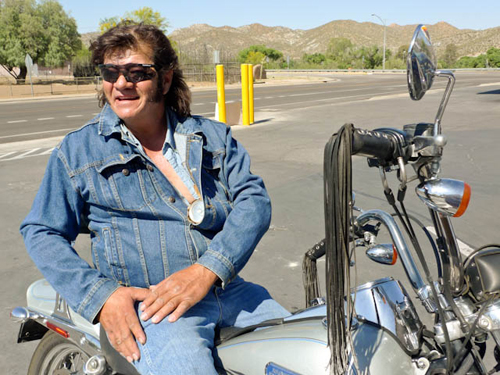















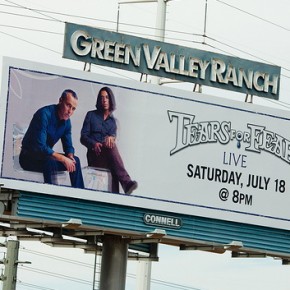
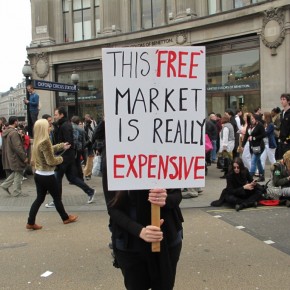
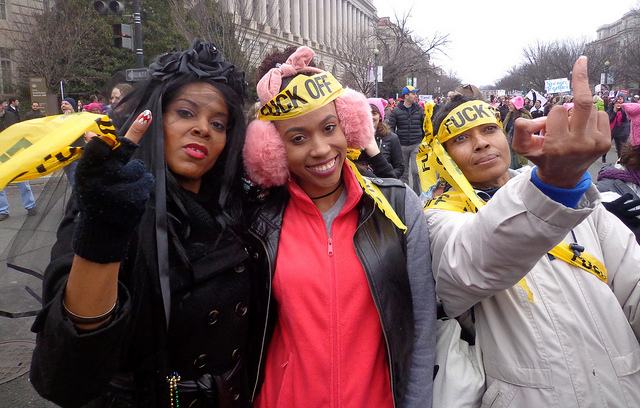

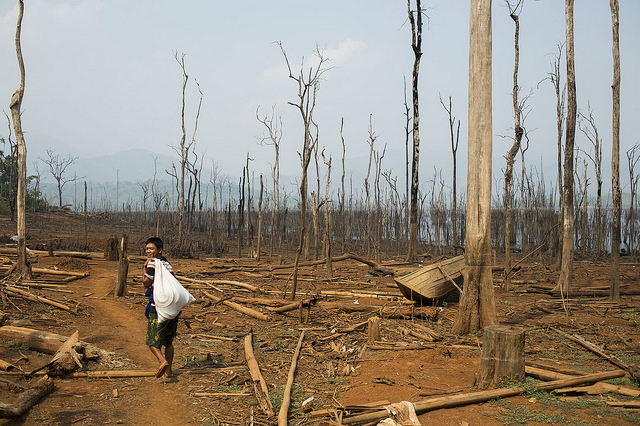
If Elvis isn’t cool enough, your sensitivity towards the miners, the scene there, and yourselves make this piece a reality check on our declining social order and work options that everybody should think about. Morte lenta, vita breve. The pictures are great and illuminating – sending out a warning to all and sundry. Elvis has managed a slim escape into a past/present dream. Many wish for another identity than the one they inhabit now, options have dwindled – so goes the Dream. Lets have some fireworks to celebrate it’s departure – how about that white peeling house up there on the hill? The conflagration in the present will look great sending sparks upwards, as far as the unobtainable stars maybe, whirling alone, millions of years ago, in a background.
“To sleep, perchance to dream-“